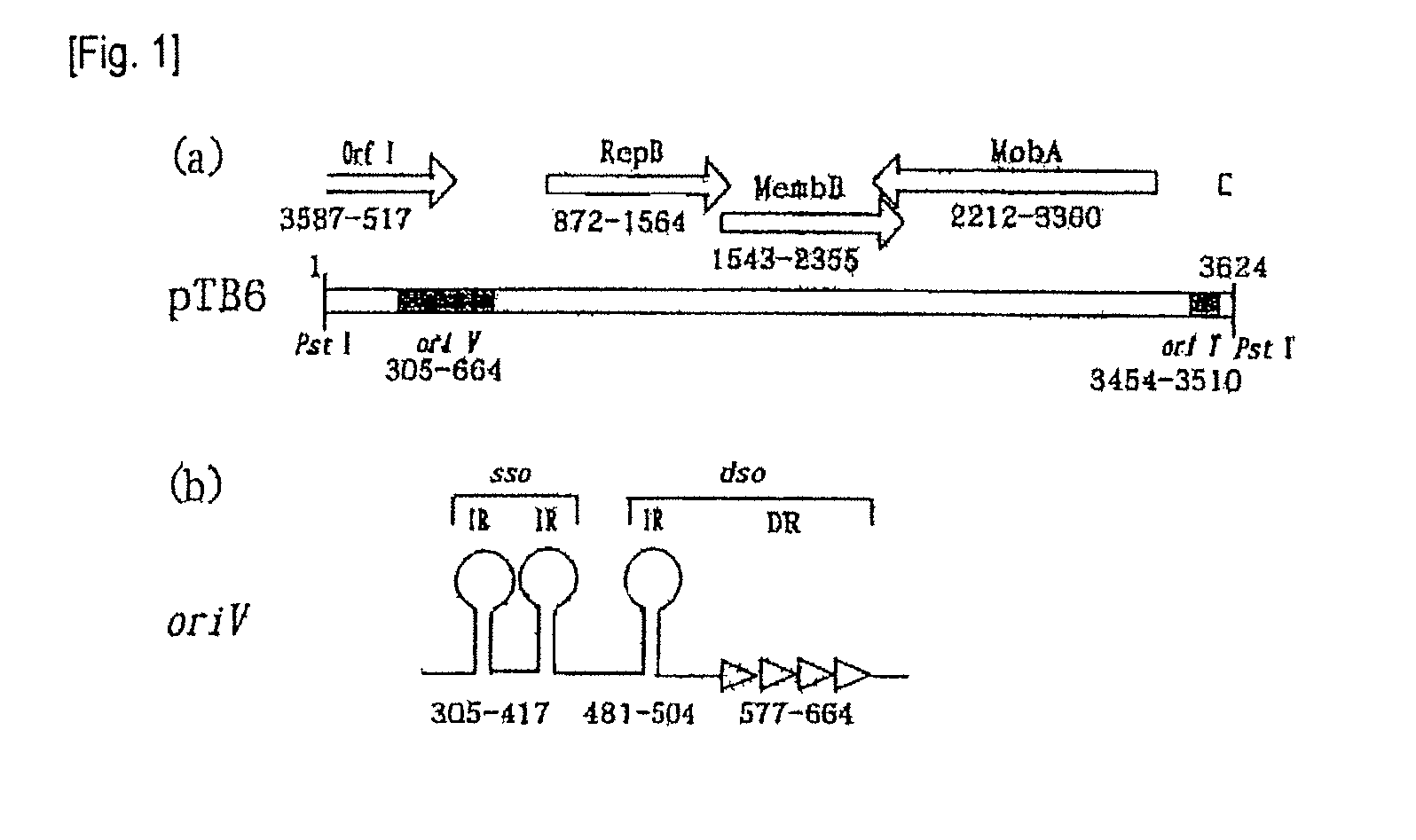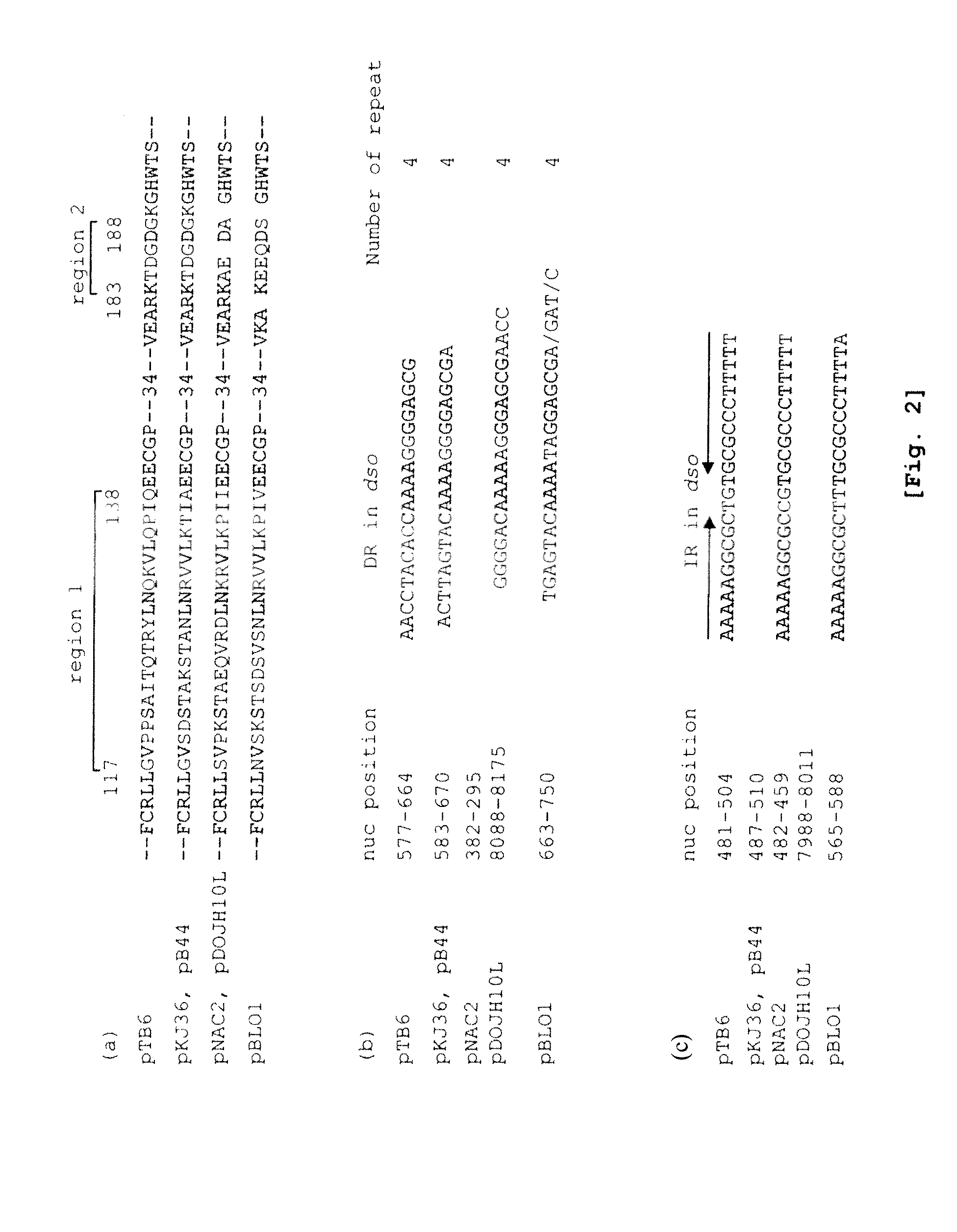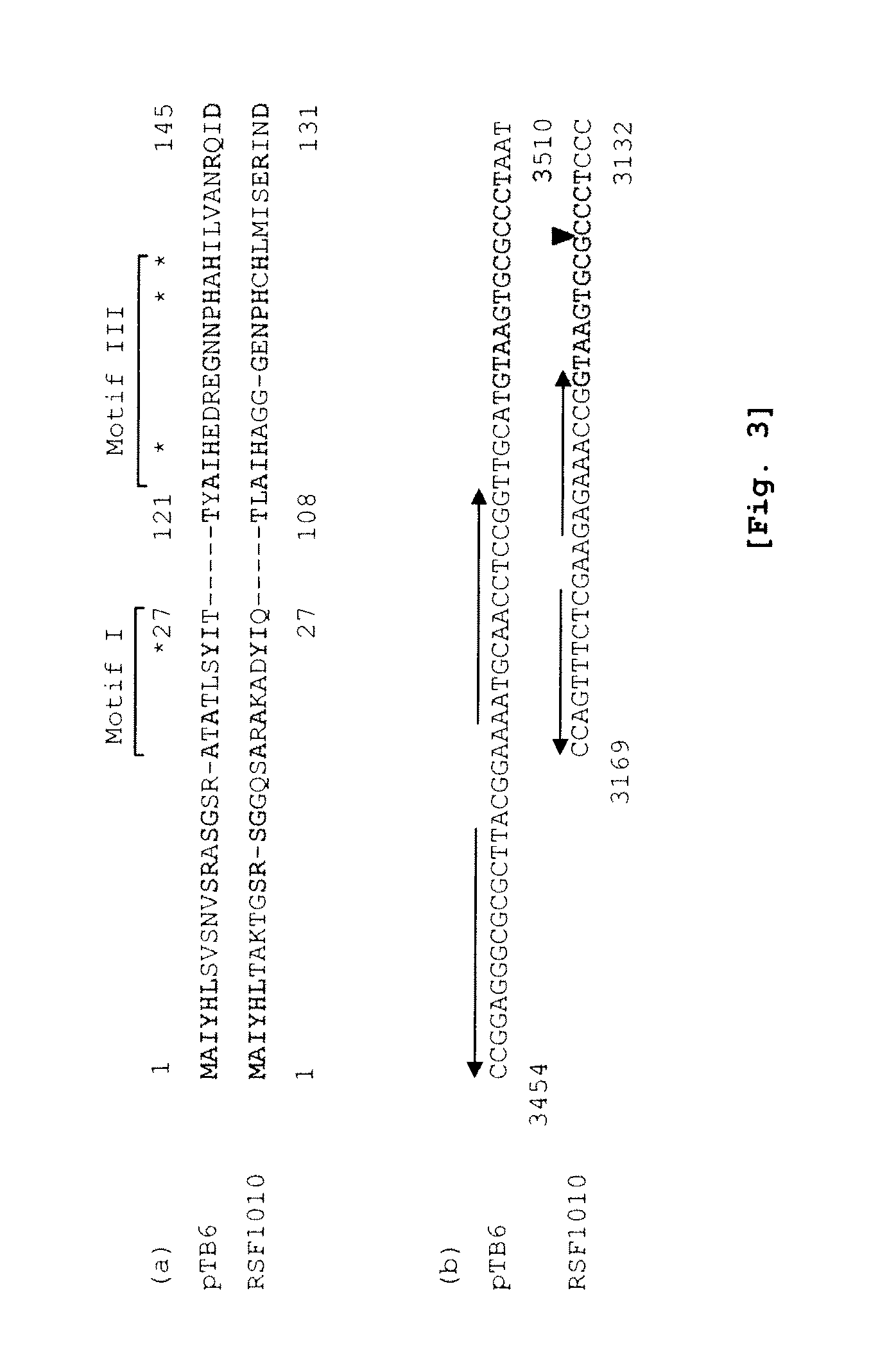Shuttle vector for Bifidobacterium and Escherichia coli
a technology of bifidobacterium and escherichia coli, which is applied in the direction of bacteria material medical ingredients, peptide/protein ingredients, drug compositions, etc., can solve the problems of little known genetic properties of these bacteria, and achieve the effects of stable cell structure and segregation of phenotypes, wide host range, and high transformation efficiency
- Summary
- Abstract
- Description
- Claims
- Application Information
AI Technical Summary
Benefits of technology
Problems solved by technology
Method used
Image
Examples
example 1
Structural Analysis of Plasmid pTB6
[Materials and Method]
1. Bacterial Strains, Plasmids, and Media
[0062]Bacterial strains and plasmids used in the present invention are listed in Table 1. Escherichia coli was aerobically cultured at 37° C. in LB broth (10 g of Bacto-tryptone, 5 g of yeast extract, 5 g of NaCl, and 0.1% glucose per litter), and colonies were allowed to form in LB broth containing 1.5% agar. Bifidobacterium longum 105-A (see Non-Patent Document 12) was anaerobically cultured at 37° C. in MRS broth (Difco Laboratories, USA) supplemented with 50 mM sucrose, 0.34% cysteine, and 0.02% sodium ascorbate. An antibiotic (50 μg / ml ampicillin (Ap) and / or 75 μg / ml spectinomycin (Sp)) was added according to need. Colonies were allowed to form on broth containing 1.5% agar by using Gas-Pak anaerobic system (BL, USA) according to the method described in Non-Patent Document 12.
[0063]
TABLE 1Bacterial strains and plasmids used in this studyStrain or PlasmidsRelevant characteristicsSou...
example 2
Construction of Shuttle Vector pAV001
[Construction of Plasmid]
[0081]Enterococcus faecalis-derived sequence containing spectinomycin adenyltransferase (AAD cassette) was amplified from pBLES100 by PCR and subcloned into pCR-Blunt II-TOPO vector (Invitrogen) to prepare pCRTOPO-ScaI-AAD-Eam1105I. Restriction enzymes sites ScaI and Eam1105I were added to forward and reverse primers, respectively.
[0082]As shown in FIG. 5, a cloning vector pGFPuv (DEFINITION: Cloning vector pGFPuv. ACCESSION: U62636 VERSION: U62636.1 GI: 1490528) purchased from Invitrogen is composed of a GFPuv gene, multi-cloning sites (MCS) located at both ends thereof, an ampicillin resistance gene, and a plasmid replication origin Ori (pUC Ori) of Escherichia coli.
[0083]The ampicillin resistance gene site was cleaved with restriction enzymes Eam1105I and ScaI to prepare a long fragment without the site. Similarly, pCRTOPO-ScaI-AAD-Eam1105I was cleaved with restriction enzymes Eam1105I and ScaI to prepare a fragment (...
example 3
Cytosine Deaminase Gene Expression Vector pAV001-HU-eCD
[Construction of Expression Vector]
[0088]Next, pBLES100-S-eCD was cleaved with restriction enzymes HindIII and SpeI to extract a sequence of approximately 2900 by containing a HU gene promoter, an Escherichia coli-derived cytosine deaminase gene, and a HU gene terminator. A long fragment obtained from the shuttle vector pAV001 cleaved at the restriction enzyme sites in the multi-cloning site with HindIII and SpeI and the above fragment of approximately 2900 bp were ligated by use of T4 DNA ligase to prepare pAV001-HU-eCD (approximately 7100 bp).
[Comparison of Plasmid Copy Number in Bifidobacterium longum]
[0089]The pAV001-HU-eCD and pBLES100-S-eCD constructed this time were respectively introduced into Bifidobacterium longum to prepare two recombinant microorganisms, Bifidobacterium longum:: pAV001-HU-eCD and Bifidobacterium longum::pBLES100-S-eCD. The presence of the respective plasmids was confirmed by PCR. Bifidobacterium long...
PUM
| Property | Measurement | Unit |
|---|---|---|
| parallel resistance | aaaaa | aaaaa |
| concentration | aaaaa | aaaaa |
| concentration | aaaaa | aaaaa |
Abstract
Description
Claims
Application Information
 Login to View More
Login to View More - R&D
- Intellectual Property
- Life Sciences
- Materials
- Tech Scout
- Unparalleled Data Quality
- Higher Quality Content
- 60% Fewer Hallucinations
Browse by: Latest US Patents, China's latest patents, Technical Efficacy Thesaurus, Application Domain, Technology Topic, Popular Technical Reports.
© 2025 PatSnap. All rights reserved.Legal|Privacy policy|Modern Slavery Act Transparency Statement|Sitemap|About US| Contact US: help@patsnap.com



